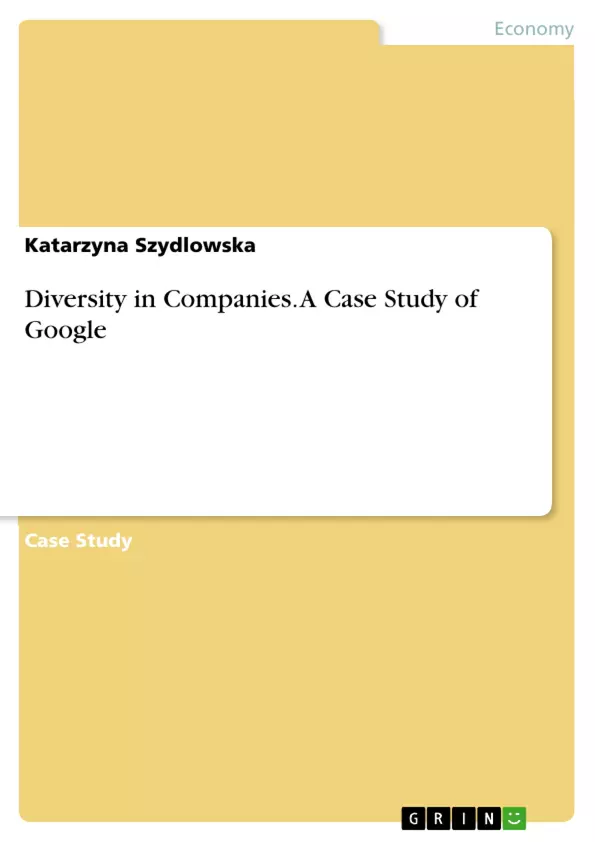This paper will highlight the importance of diversity.
Firstly, I will explain, what diversity is in general. Secondly, I will focus on the diversity’s impact on the workforce. I will emphasise benefits and drawbacks of this phenomenon. I will also adduce some models associated with diversity. Furthermore, I will stress the main issues associated with diversity in Google. I will introduce the situation of women and ethnic groups in this enterprise. In addition, I will stress the initiatives, which Google is involved in and recommend some actions, which company should take to encourage more individuals to technical industry.
Inhaltsverzeichnis (Table of Contents)
- Executive summary.
- Introduction.
- Impact of diversity on the workforce.
- Diversity in Google.
- Women's position in Google
- Ethnic groups in Google.
- The Google's initiatives.
- Recommendations for Google
- Conclusion.
Zielsetzung und Themenschwerpunkte (Objectives and Key Themes)
This paper aims to explore the importance of diversity in the workplace, specifically focusing on its impact on workforce performance and the case study of Google. The paper will analyze the benefits and drawbacks of diversity, highlighting key issues related to women's representation and ethnic groups in Google, while also examining initiatives taken by the company.
- The positive and negative impact of diversity on the workforce.
- Diversity's influence on innovation and business success.
- The situation of women and ethnic groups in Google.
- Initiatives undertaken by Google to promote diversity.
- Recommendations for Google to encourage more individuals to join the technical industry.
Zusammenfassung der Kapitel (Chapter Summaries)
The paper begins by defining diversity and explaining its multifaceted nature, encompassing aspects such as personality traits, internal factors like gender and ethnicity, external factors like religion and nationality, and organizational factors like position and department.
The impact of diversity on the workforce is explored, highlighting its positive contributions to business prosperity, innovation, and increased earnings. However, the paper also acknowledges the potential for negative consequences, such as cultural conflicts, lower levels of psychological identification, and communication challenges.
The paper then delves into the specific case of diversity at Google, examining the representation of women and ethnic groups within the organization. It investigates the initiatives implemented by Google to promote diversity and suggests further actions that the company could take to encourage a more inclusive workforce.
Schlüsselwörter (Keywords)
Key concepts explored in this paper include diversity, workforce, innovation, business success, Google, women's representation, ethnic groups, initiatives, and inclusivity. The paper also examines relevant theories and models related to managing diversity and implementing organizational change.
- Quote paper
- MBA graduate Katarzyna Szydlowska (Author), 2017, Diversity in Companies. A Case Study of Google, Munich, GRIN Verlag, https://www.grin.com/document/421555



